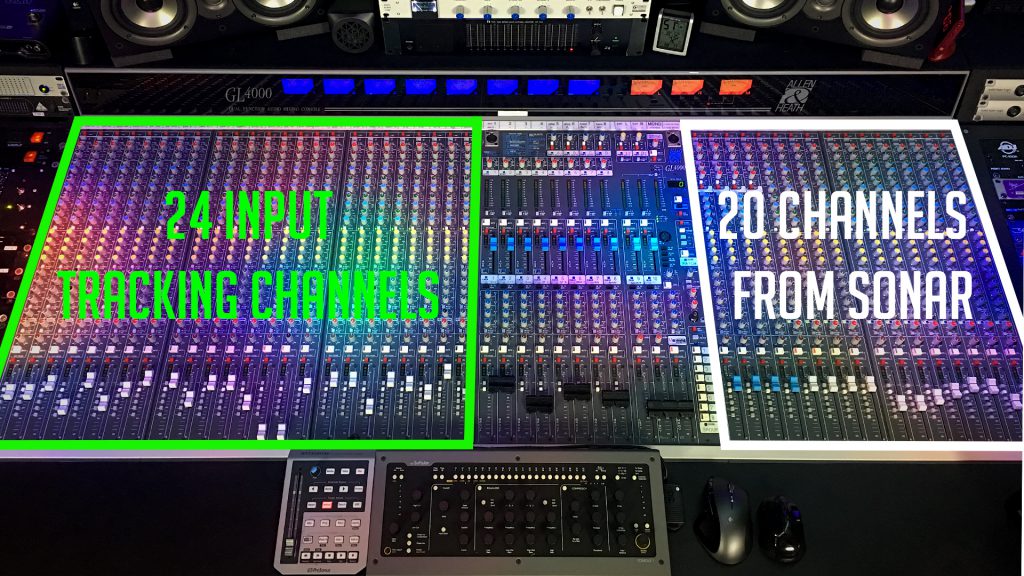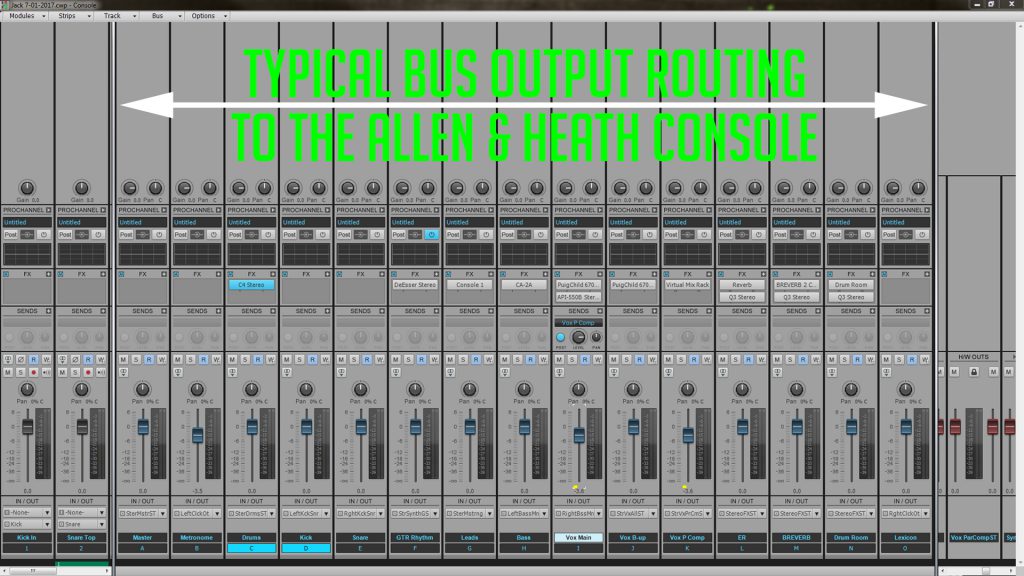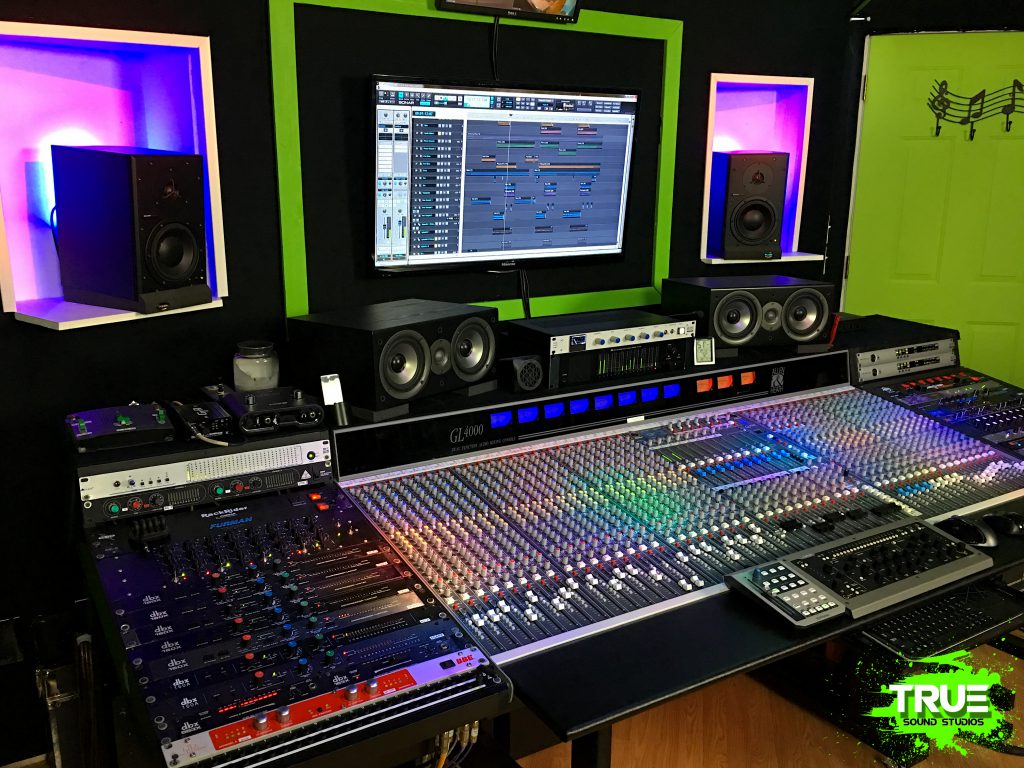Ryan Wiesner “Weezna” is the owner and operator of True Sound Studios outside of Buffalo, NY. He chooses SONAR Platinum to produce a range of music including Hip Hop, EDM, Pop, and Rock. We discovered Ryan from his YouTube channel and were impressed with his studio and with the videos he’s creating using SONAR. We got him to take a break from his rigorous recording and video creation schedule to talk to us about why he uses SONAR and how he’s integrated it into his hybrid digital / analog productions.
Tell us about True Sound Studio—how did you get started?
My music career began before I was even born. My dad was a drummer for a band that was on the billboard charts in the 70’s. He never pressured me to go into music, but I was always drawn to music and speakers. When I was 14, my dad set up his drum kit in the basement and I began learning drums. I almost instantly started a band and wanted to record our songs. I used my two-channel cassette recorder and a cheap microphone to record our first song. 2 years later in 1999, True Sound Studios was open for business in my parent’s basement. I worked so hard to get out of that basement and into my dream studio, and have been on my own for 10 years now.
How did True Sound Studios & SONAR meet?
I went to a music store to buy a recording program, and I was originally talked into buying Pro Tools. Being a PC user, Pro Tools did not work well. A week later, I returned to the store and exchanged for a tool that was more PC based. That was SONAR and I’ve been using it solely for over 15 years.
Why did you choose SONAR for your studio?
In the beginning, I was not familiar with SONAR and all of its capabilities. I started to test other DAWs, however I always found myself going back to SONAR. It has always been a very powerful DAW.
What’s been your favorite project to work on so far?
My favorite project to work on to date was sampling my dad’s original music. My uncle gave me a box of old reel-to-reel tapes from the 70’s, along with a 50-year-old, broken, reel-to-reel tape machine. I spent 3 months fixing the machine, finally able to listen to the tapes. Hearing the original recordings of my dad’s band inspired me to create a new song. I sampled a track, and began the editing process in SONAR. I time stretched and changed the pitch to create an upbeat, mainstream hip-hop track. The final product became the favorite song to listen to at family gatherings.

What’s been the most challenging?
The most challenging aspect has been integrating an analog mixing console and analog outboard gear with SONAR, while trying to be efficient with mixing. Recalling projects on an analog console can be extremely time-consuming, however I was able to split the console in two parts to resolve this issue. The first 24 channels of the console are my input tracking channels that I use to record live instruments.

Each channel has been modified with a Neve 1073 clone preamp and integrated into the console. This adds a great flavor to the console and contributes to the overall sound of the studio. The last 20 channels on the console are the outputs from SONAR and act as a summing section. This is where a majority of the outboard analog gear is hooked up to. This includes DBX 160A, 160X, and 163X compressors, 8 API 500a EQ’s, onboard British style EQ per channel, BBE sonic maximizers, API op-amps, Lexicon reverb, and more!

I see you are using a Softube Console 1, an analog mixer and outboard gear?!? How do all these influence your workflow?
Bringing in components like Softube Console 1 and analog gear, and using them with SONAR, allows me to be very dynamic with my recording workflow. Depending on the nature of the project, I will use the sound of the analog gear with the digital control of SONAR to create character for the unique sound.
When I’m recording any instrument into the console, I typically just use the Neve 1073 clone preamps, EQ from the console, and focus the most amount of my time on mic positioning. I find the best sound comes from trying multiple mics and moving them around the source to make myself and the client happy.
When recording vocals, I always use the Neve 1073 clone preamps, eq from the console, and a DBX 160X compressor. I find that the addition of the DBX compressor adds control and a tone I’m unable to get without the compressor.
During playback, this is where a majority of the outboard analog gets used for more control. The kick and snare for example, first gets some processing from the Softube Console 1. I really love the shape section which helps get the punch and sustain under control right away. I often take out some 500hz out of the kick and add some 3k and 6k. The snare gets a cut at about 1k and then a boost at 250hz for a smoother snare sound. Then both the kick and snare get sent from separate outputs in SONAR to the API 550a EQ’s for some more sculpting and then to the DBX 160A compressors. These then come back to the console and are sent to a parallel compression bus and the main bus. The parallel compression bus is a mono bus with a very aggressive compressor setting to really beat up the drum sound. Ultimately they then run into an analog SSL bus compressor clone to finish the chain.
You use SONAR nearly everyday—tell us one of your favorite tricks.
My favorite SONAR trick is to set up my Logitech MX Revolution mouse to control the 6 tools in the toolbar in Cakewalk. I programmed (using the included Logitech software) the multiple buttons on the mouse to use the F5, F6 and so on commands to easily switch between tools. This significantly speeds up my editing time, and leaves my left hand open to use the Presonus Faderport or on the keyboard.

Crazy hypothetical—if SONAR only had 5 features, what would you want them to be?
- Automation: I love the ability to change EQ settings in a plugin, the overall track volume, or panning an instrument as the track changes from part to part.
- Assignable Outputs: Without this I couldn’t bus or group my tracks to my analog mixing console which would change my entire workflow.
- Auxiliary Sends to Buses: I use aux sends to send signal to my FX buses to add early reflection, reverb, delay, or for parallel compression.
- Time Stretching: I’m often time stretching a clip to make it fit to a time signature and sometimes to better align it to a track. This is very crucial in my productions as it adds another layer of professionalism to a track. I also love using AudioSnap to time align my live multi tracked drums to a grid.
- Snap to Grid: Whether I’m copy/pasting vocals, cutting up audio to add effects, aligning guitar chops, correcting time issues with midi, or programming drum parts, my snap to grid function is on a majority of the time. I’m often using the 1/16 note with the smart snap off, or snapping right to whole notes.
How did you get started making YouTube tutorials for SONAR?
Through other social media, people continued to ask me similar questions on producing, recording, mixing, and mastering. I found that people often asked questions that were difficult to answer via email, so I decided to start up a YouTube channel to answer the questions in detail. I wanted to promote the vast capabilities of a DAW, so I began educating my audience on the power of SONAR.
What plugins do you use on your everyday productions?
I started off using SONAR with Waves plugins that I had purchased from a gentleman at a garage sale about 13 years ago. At that time that was primarily what I used to mix and master. Since then the plugin world has exploded and the options are endless.
Currently I use the Softube Console 1 which has been amazing on drums, guitar, and synths. I use a lot of Waves products including the PuigChild compressor, PuigTec EQ, DeEsser, RComp, Vocal Rider, C4 multiband processor, to name a few favorites.
As SONAR progresses, I have found their plugins are as powerful and often better than the competition. I have been using the Cakewalk CA-2A on almost everything and the S Type Bus Compressor on a majority of my bus groups. The BREVERB reverb plugin has so much character and ends up on almost every track. The VocalSync has been a huge savior when tracking and mixing pop music. Lining up 2 separate vocal takes has never been so easy and a big time saver. I also use the Dimension Pro and Rapture synths on most of my tracks I produce. Those synths are loaded with the modern sounds that myself and my clients are looking for. My one and only drum machine that I use is the Session Drummer plugin. I have found this to be the most useful with my setup and love the routing options I have in SONAR. I will take each individual drum and send it to a separate track in SONAR to have the most flexibility in mixing. I also use all of my own drum samples from varying drum kits to create the overall sound I’m looking for. I will also make my own drum samples and then use those drum samples in Session Drummer. Last, my mastering has taken a huge shift with the newly released LP EQ and LP MB plugins.

To learn more about what Ryan & True Sound Studios are doing with SONAR each day, following them on Facebook. If you want to see more of the videos by True Sound Studios, check out their YouTube channel for weekly updates.

